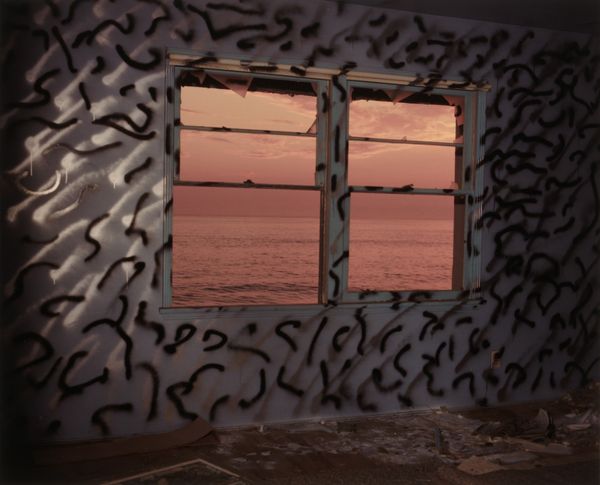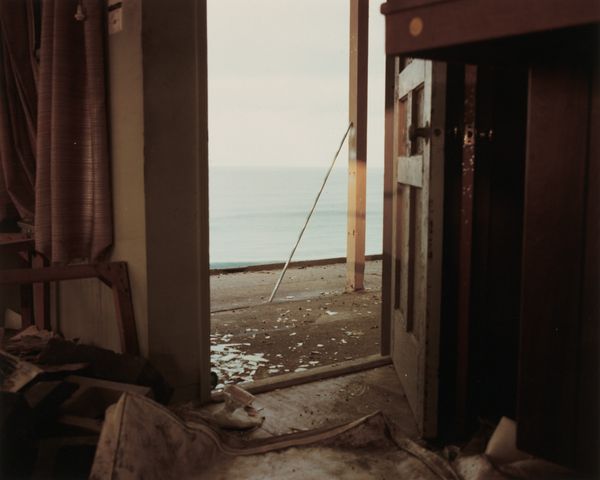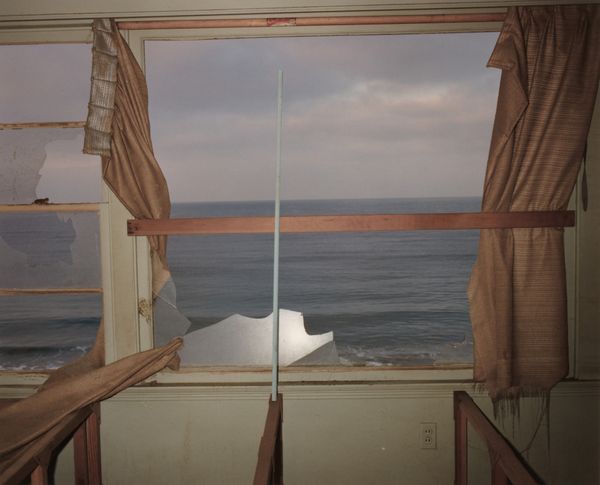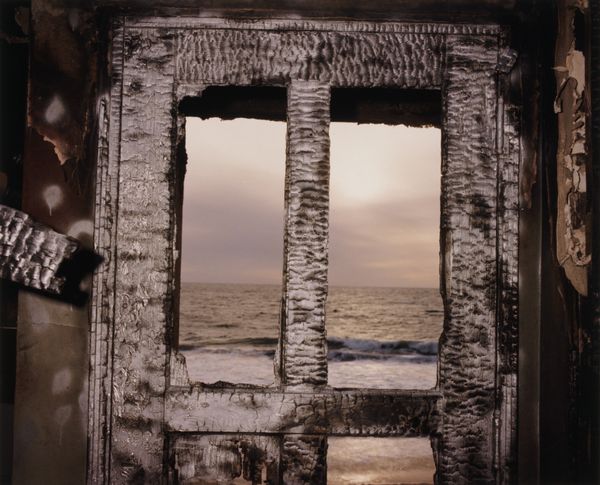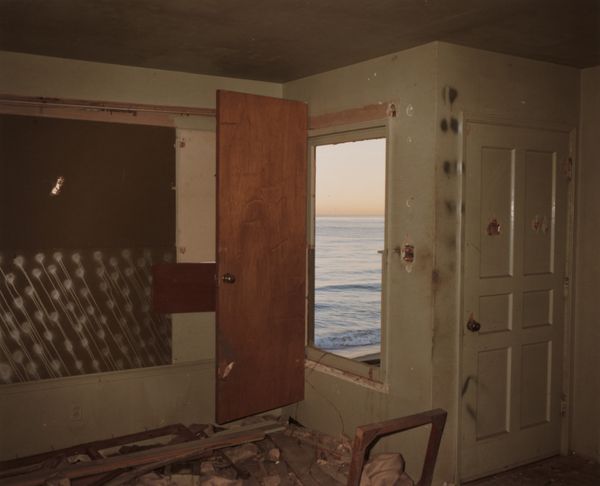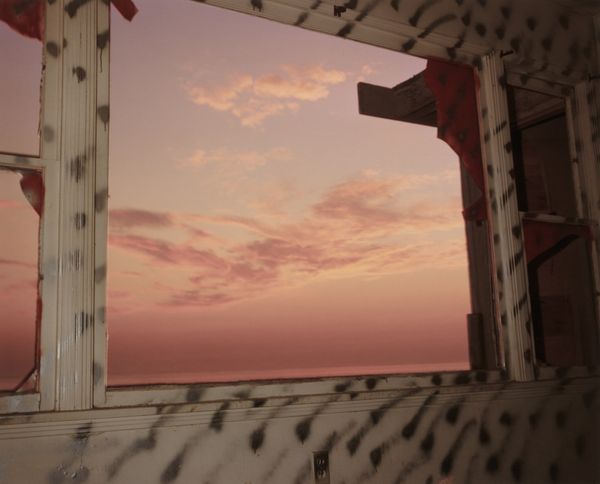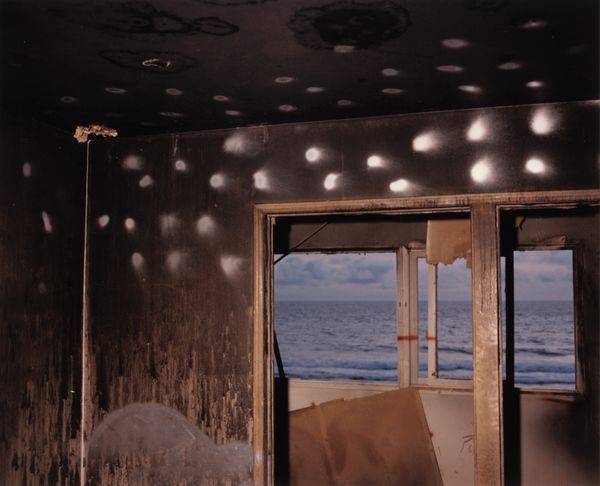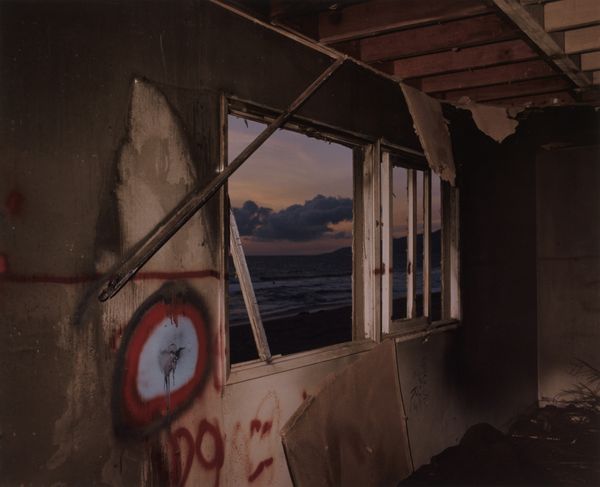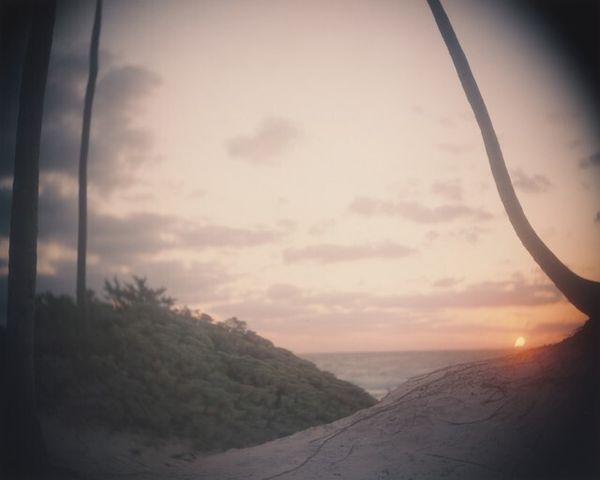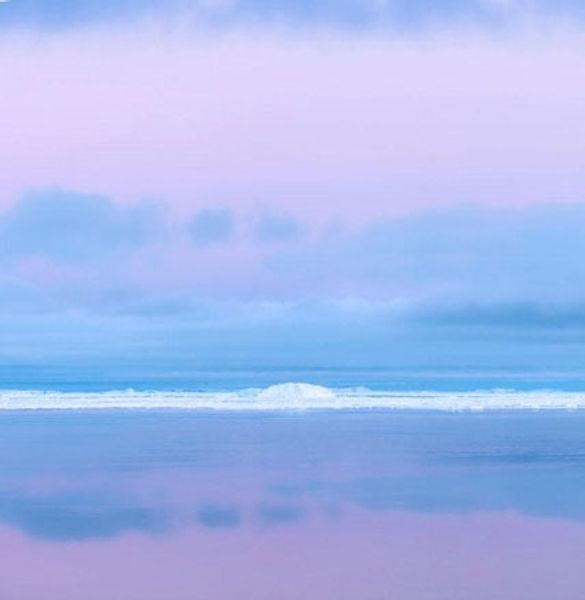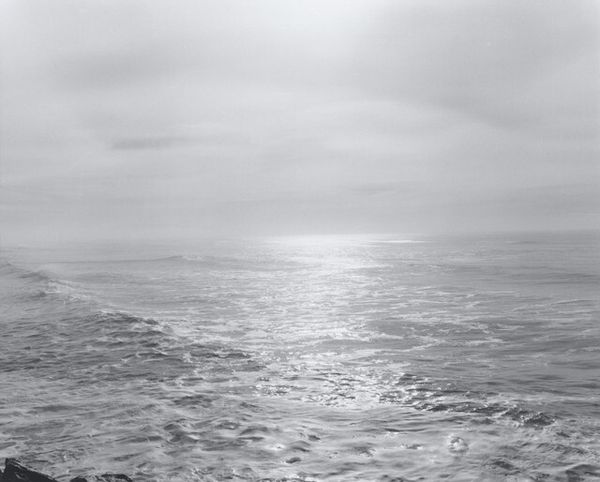
photography, site-specific
#
landscape
#
photography
#
site-specific
#
realism
Dimensions: image: 24.77 × 30.48 cm (9 3/4 × 12 in.) sheet: 27.94 × 35.56 cm (11 × 14 in.)
Copyright: National Gallery of Art: CC0 1.0
John Divola made "Zuma #21", we don't know when, but it's a photograph. Immediately, what strikes me is the dialogue between the chaotic and the serene. The artist seems to relish the act of layering—the calm, expansive sea and sky seen through a broken window frame daubed with what looks like white spray paint. It’s a play of contrasts: smooth versus rough, destruction versus peace. It’s as if Divola is asking, can beauty be found in decay? Look closely at the spray paint marks—each one is a little gesture, a quick flick of the wrist, a record of the artist’s presence. The window frame itself is a kind of stage, framing our view and dictating what we see. The ruined building creates a beautiful tension with the beauty of the ocean view. Think of Gordon Matta-Clark perhaps, another artist who loved to cut into buildings, revealing hidden depths. Like Matta-Clark, Divola invites us to reconsider our relationship with architecture and landscape. Art is, after all, an invitation to keep looking, keep questioning, and keep finding new meanings in the world around us.
Comments
No comments
Be the first to comment and join the conversation on the ultimate creative platform.

